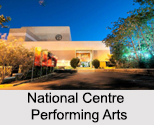 Considered as one of the tradition of Indian culture, theatre since ages depicted the abundant tradition of the land. Right from the earliest days till the modern times, theatre happens to be one of the celebrated art forms in India. Although, the history of Indian theatre goes back to the mythological or the Vedic era yet it is during and after the medieval period theatre in India that gained its redefined structure.
Considered as one of the tradition of Indian culture, theatre since ages depicted the abundant tradition of the land. Right from the earliest days till the modern times, theatre happens to be one of the celebrated art forms in India. Although, the history of Indian theatre goes back to the mythological or the Vedic era yet it is during and after the medieval period theatre in India that gained its redefined structure.History of Indian Theatre Stages
The Indian theatre has a belief going back to at least 5000 years. The first book on drama in the world was written in India. It was called ‘Natya Shastra’, the grammar or the sacred book of theatre by Bharat Muni. Its era has been placed between 2000 B.C. to 4th Century A.D. A long duration of time and performance is required for any art or movement to form its rules and notifications. Theatre with its appeal and art has always been the most important element in mouthing the unspoken. Theatre in India started as a storyline form, like reciting, singing and dancing becoming essential fundamentals of the theatre. This importance on narrative elements made theatre fundamentally theatrical right from the beginning. That is why the theatre in India has included all the other forms of literature and fine arts into its physical presentation: Literature, Mime, Music, Dance, Movement, Painting, Sculpture and Architecture - all mixed into one and being called ‘Natya’ or Theatre in English.
Indian theatre stages did not form in a day. The deep seated relation with folk drama forms like Kabigan, Kirtan and Baul songs, Chhau, Gajan, Jatra and Paalaagaan, which were then mainly performed in open grounds, paved the way of setting up Indian theatre stages. The sound of the orchestra, the rich-red-ruddy illumination of those footlights offered that contour to theatre whilst making it lot more contemporary. The famous Indian theatre stages amidst its pits, galleries and dais thus murmurs the tale of a changing tradition.
Indian theatre stages slowly became the platform to illustrate the unspoken whilst manifesting the realisms. Theatre which was once an artistic illustration of the varied aspects those were larger than life, gradually became more contemporary. Natya then broke the barriers of eposes and raslila and became the weapon to free the world from the clutches of absolute corruption and exploitation.
For more, visit the link below: